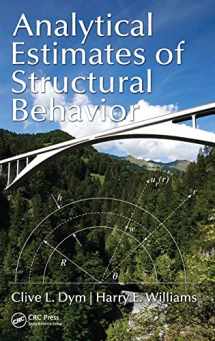
Analytical Estimates of Structural Behavior
Book details
Summary
Description
Explicitly reintroducing the idea of modeling to the analysis of structures, Analytical Estimates of Structural Behavior presents an integrated approach to modeling and estimating the behavior of structures. With the increasing reliance on computer-based approaches in structural analysis, it is becoming even more important for structural engineers to recognize that they are dealing with models of structures, not with the actual structures. As tempting as it is to run innumerable simulations, closed-form estimates can be effectively used to guide and check numerical results, and to confirm physical insights and intuitions.
Spend Less Time Generating Numbers, and More Time Understanding What They Mean
This book encourages readers to think about structures and their models in a way that is rooted in classic elementary elasticity―depending less on advanced mathematical techniques and more on the dimensions and magnitudes of the underlying physics. The authors stretch the mold, emphasizing and more explicitly describing the modeling process. The focus is on learning which calculations to perform and how to validate and interpret the results―skills that will be increasingly useful for professional engineers.
Chapters cover:
- Key principles and techniques of mathematical modeling, including dimensional analysis, scaling, linearity, and balance and conservation laws
- Basic structural models
- How to develop and express physical intuition
- How to track the behavior of arches under lateral load
- Two methods of analyzing coupled discrete systems―Castigliano’s theorems and Rayleigh’s quotient―to lay a foundation for their application to continuous systems
- How to derive simple, accurate estimates of the transverse displacements of structures modeled in terms of coupled Timoshenko beams
- How to


We would LOVE it if you could help us and other readers by reviewing the book
Book review



